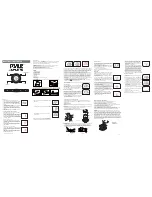
-"1
*,",
-/9ÊÉÊ-"
,,°Ê"ÊÉÊ-*/
," 9
,6, ÊÉÊ",1-
ÊÉÊ ,
"7,
"7,
1//9
1//9
1**,ÊÓ
1**,ÊÓ
1**,Ê£
1**,Ê£
"
"
-6
-6
-
-
"
"
1
*,",
-/9
-"1
Ê`Ã
Ê`Ã
," 9
,,°°
"7°°
-/9Ê"
£
Ó
Î
{
REC
REC
TEMPO
METRONOME
PAGE
PAGE
PAGE
PAGE
CURSOR
The STYLE LOCK function allows you to select Performances without changing the cur-
rent Style. When STYLE LOCK is active (the display indicator is ON), you can move from
one Performance to another without changing the Style. If you hold down this button for
about 2 seconds, the TEMPO LOCK function activates (as already explained). The status
of the TEMPO LOCK function is displayed by the alternate fl ashing of the Tempo set-
ting with the word ‘LOC’. This function maintains the current Tempo setting for all Style
and Performance changes. When OFF, selecting a Style or Performance also recalls the
original tempo setting.
STYLE/TEMPO LOCK
TEMPO LOCK and STYLE LOCK functions can both be active at the same time.
This button starts the Metronome click in Play and Record modes. When active, the Met-
ronome icon is shown in the display.
METRONOME
Active (led ON), non active (led OFF) This is a general control which activates the sustain
effect on the three Real Time keyboard sections, independent of the Damper pedal. If
you want to sustain the Sounds of the UPPER 1, UPPER 2 and LOWER sections, activate
this function.
SUSTAIN
Enables or disables the HARMONY function, a feature which can orchestrate your play-
ing, making simple one-note melodies sound as if they are being played by a full or-
chestra. The corresponding display indicator turns on when HARMONY is active. The
structure of the automatic harmony is based on the current Harmony Type setting and
only operates when the keyboard is split.
HARMONY
By holding down the HARMONY button for about 2 seconds, the display shows the cur-
rently selected Harmony Type.
The PAGE buttons select the Harmony type. The types of Harmony available are divided
into two categories, according to whether the Harmony depends on the notes played
with the left hand or not. Harmony types that depend on the notes played below the
split point
Closed
The notes played on the left hand are added to the melody note exactly as played. The
harmonising chord is a closed (or tight) position (notes fall within the same octave).
Open 1
Same as close but with an open chord (notes spreadover 2 octaves).
Open 2
Similar to Open 1 but with the notes played on the left hand randomly assigned to the right.
Block
Transforms the melody note into a full four or fi ve note chord, each note in perfect harmony.
Octave 1
doubles the note of the right hand by playing an octave higher. No left hand chord are
required.
Oscar :
Doubles the note of the right hand with a note two octaves below. No left hand chord required.
This structure is based on the harmony typically used by the jazz musician Oscar Peterson.
Jazz
Adds two notes above the note played by the right hand, at intervals of a fourth and a minor
seventh. No left hand chord required. Rock : creates a three note chord consisting of the melody
note, a fi fth interval and an octave interval (e.g. C-G-C.). No left hand chord required
Rock:
Creates a three note chord consisting of the melody note, a fi fth interval and an octave interval
(e.g. C-G-C’). No left hand chord required.
Harmony types that do not depend on the notes played below the split point
owners
manual
wk1000
Page31
Styles
















































